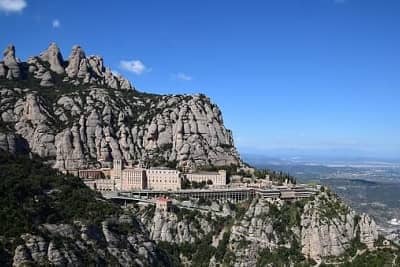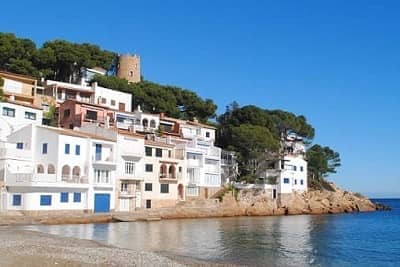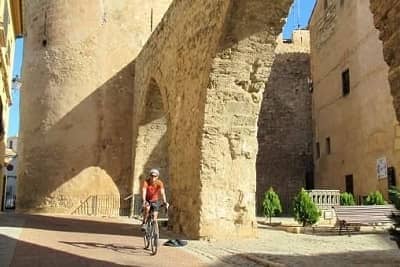Training for a Cycling Holiday
A cycling holiday is supposed to be fun. It is a chance to experience fantastic scenery, discover a new culture and also to challenge yourself. If you are in
decent shape, then a cycling holiday will probably not put you in any physical difficulty, allowing you to fully enjoy the trip.
However, if it has been a while since you have done much regular riding, or if you plan to undertake a more challenging holiday, a bit of training beforehand can help you to get the most out of your tour.
So, what exactly are the benefits of doing some preparation rides; how will it help you on the tour?
however, they can also result from a lack of flexibility or struggling with the demands of riding for several days in a row - both of which can be prevented by riding in the weeks before your tour, and getting the muscles and ligaments used to the repetitive movements.
As long as you are using a reasonable saddle and cycling shorts, saddle soreness can usually be eliminated or drastically reduced by making sure that you clock up enough miles in the saddle before your holiday.
Doing some kind of training plan before the holiday will help to prepare you for cycling on consecutive days, as well as enabling your body to recover more quickly from the daily effort. Instead of waking up wishing for a day off, you will be excited and happy to ride right until the last day of the tour.
A gradual increase in mileage in the weeks leading up to the holiday will not only help to prepare your body for more riding, but will also considerably improve your general cardiovascular fitness, as well as conditioning your knees and back to the demands of cycling.
The following are all factors to consider, which will influence the quantity and quality of training you may consider doing before a trip:
It is not necessary to practice on hills and mountains to be able to enjoy riding them. However, if you have not cycled in high mountains before, there are a few drills that you can do in the weeks beforehand to prepare yourself for conquering long, steep mountain passes with ease.
The most easy of these is to throw in extended intervals where you push your heart rate up considerably higher than you are normally comfortable with (up to around 85% of maximum heart rate) - these intervals can last between five and twenty minutes, depending on the lengths and steepness of the climbs that you will be tackling.
Check out our guide to cycling hills for some basic tips for riders on leisurely holidays, and how they can get the most out of riding in more rolling or hilly regions.
If you book by yourself, then you will need to resolve any mechanical problems that you face - depending on which part of the world you travel to, it may not be easy to find a bike shop.
It is a good idea to make sure in your training rides (or at home) that you are prepared to resolve the kind of problems you might face. If you are booked on a guided or self-guided holiday through a company, you have little to worry about - just make sure you can fix a puncture.
If you are going by yourself, try to get a good knowledge of all the working parts of the bike. If you are unlucky enough to get a cracked frame or broken wheel, there is not a lot you can do by yourself; however, you should have the tools and knowledge to repair more common problems, such as replacing snapped cables, and adjusting both derailleurs.
Most people considering a cycling holiday already have a higher level of fitness than the average population, and many also have recent cycling experience. As such, it is a case of tailoring your current rides to something more similar to the intensity and duration that you will be experiencing on the holiday, rather than starting a new specific plan.
When assessing your fitness, it is important to bear in mind a variety of factors. For example, if you have managed to cycle 80km, but needed to sleep for 14 hours afterwards, and didn't fully recover for another four days, you will probably need to do more training (or practice cycling at a lower intensity!) in preparation for a tour with a similar daily average.
Remember that cycling holidays are not races and that you should aim to got a speed that allows you to enjoy the cycling and the surroundings, rather than counting down the kilometres until arrival.
If you are already cycling regularly, this will not be a problem. Simply continue with regular rides, at least once or twice a week, and aim to get several of them up to the same amount of time that you will spend in the saddle on each day of the holiday.
If you are new to cycling, or are coming back after a break, you will have to work your way up to the distance. Physically, from a cardiovascular perspective, you could probably do the distance quite comfortably straight away; however, saddle soreness, back ache and joint pains can arise if you try do too much too soon.
Take at least a month, adding around 10km weekly - if you have longer to prepare, the slower you increase the mileage the easier it will be. Try to fit in a minimum of two rides per week, even if one of them is only for half an hour or so it will still help considerably. Finally, as the general rule above suggests - by the week before your holiday, aim to be riding back to back days of around 40-50km.
In order to enjoy a holiday of this type, some recent cycling experience is recommended. If you have been cycling regularly over the last few weeks it is just a case of increasing the distance or regularity so that you are doing a couple of rides each week of close to the average daily distance. If your holiday is in high mountains, practice some fast intervals during your rides, which will simulate the kind of intensity that you will need on the steep sections in the mountains.
If you have been off the bike for a long time, it is beneficial to get in at least ten good quality rides before the start of the holiday. These should increase in length, until you are able to spend the same amount of time in the saddle as you will be doing on the average day of the holiday. If you have left it late and only have two or three weeks before the holiday - try to get out on the road every other day. Your fitness can improve rapidly with such regular riding.
For this, it is important to practice consecutive rides (probably on a saturday and sunday), of a duration similar to the average rides on the holiday. This will allow you to find an effort level that you can sustain not just for one day, but also that will allow you to come back and repeat the effort the following day.
Try to practice different skills that will be useful on the holiday. Interval training will prepare you for the heart rate spikes that come on hilly routes, and bike handling skills will help to prepare you for technical descents.
For many cyclists, specific training is not necessary; however, ensuring that the daily distance is within your capabilities, will help you to get the most from the holiday. Whether you do a handful of preparation rides, or long dedicated sessions on a turbo trainer depends on what holiday you are doing, and what exactly you want to get out of it.
If the prospect of training has not put you off the idea of a cycling holiday, then you may be interested in some of the links below, which are tours catering to a wide range of levels.
And, if you have already booked on a tour, then we hope your training goes well. Even if it doesn't, don't worry too much, you can still have a great time on and off the bike!
However, if it has been a while since you have done much regular riding, or if you plan to undertake a more challenging holiday, a bit of training beforehand can help you to get the most out of your tour.
How Training Can Help
Training is quite a loaded word, conjuring up images of professional cyclists slogging away on six hour rides during the winter months; however, in the context of a cycling holiday, it is simply means just getting in some riding before you go away.So, what exactly are the benefits of doing some preparation rides; how will it help you on the tour?
Comfort
The first big benefit is comfort. Being comfortable on the bike is obviously important on a cycling holiday. Whether you cycle for two hours or ten hours each day, saddle soreness, back pain and knee problems can spoil a ride. While back and joint pain are largely a result of poor bike fit (if you are hiring a bike, be sure to provide accurate measurements to the company, so that they can set up the bike well).however, they can also result from a lack of flexibility or struggling with the demands of riding for several days in a row - both of which can be prevented by riding in the weeks before your tour, and getting the muscles and ligaments used to the repetitive movements.
As long as you are using a reasonable saddle and cycling shorts, saddle soreness can usually be eliminated or drastically reduced by making sure that you clock up enough miles in the saddle before your holiday.
Endurance
Throwing in a few preparation rides will also ensure that you ennjoy the whole week of cycling. If you go from almost nothing to trying to ride for a few hours each day, you might be OK to begin with, but could start to struggle towards the end of the week, as various niggles catch up with you.Doing some kind of training plan before the holiday will help to prepare you for cycling on consecutive days, as well as enabling your body to recover more quickly from the daily effort. Instead of waking up wishing for a day off, you will be excited and happy to ride right until the last day of the tour.
General Health
Training is also a good idea from a general health perspective. It's often not a good idea to go from doing nothing to suddenly riding every day for a week or more, particularly if you have any underlying health problems.A gradual increase in mileage in the weeks leading up to the holiday will not only help to prepare your body for more riding, but will also considerably improve your general cardiovascular fitness, as well as conditioning your knees and back to the demands of cycling.
What to consider when preparing for a cycling holiday?
Not all cycling holidays are equal. At Cycle Fiesta, our tours range from short, gentle rides to holidays covering around 100km each day over some of the most challenging climbs in professional cycling.The following are all factors to consider, which will influence the quantity and quality of training you may consider doing before a trip:
Distance
A holiday where you will be cycling 40km per day obviously requires a different level of training to one where you will be spending six hours in the saddle, covering 100km. For shorter distances, weekly, or twice weekly rides in the month or so before the holiday will probably be sufficient. However, if you wish to do more than double that distance, a more specific training programme would be recommended.Hills
In our opinion, hills and mountains are one the best thing about cycling holidays. The scenery, the views, the challenge, the lack of traffic and the tranquility that usually comes with climbing hills is everything that is good about cycling. However, if you are not prepared for them, they can turn into tortuous and interminable routes.It is not necessary to practice on hills and mountains to be able to enjoy riding them. However, if you have not cycled in high mountains before, there are a few drills that you can do in the weeks beforehand to prepare yourself for conquering long, steep mountain passes with ease.
The most easy of these is to throw in extended intervals where you push your heart rate up considerably higher than you are normally comfortable with (up to around 85% of maximum heart rate) - these intervals can last between five and twenty minutes, depending on the lengths and steepness of the climbs that you will be tackling.
Check out our guide to cycling hills for some basic tips for riders on leisurely holidays, and how they can get the most out of riding in more rolling or hilly regions.
Support
If you have booked the holiday through a tour operator then you will receive support along the route. On a guided tour, the guide will attend to any mechanical problems you have with the bike. On a self-guided tour, you will be expected to repair minor problems, such as punctures or saddle adjustment by yourself.If you book by yourself, then you will need to resolve any mechanical problems that you face - depending on which part of the world you travel to, it may not be easy to find a bike shop.
It is a good idea to make sure in your training rides (or at home) that you are prepared to resolve the kind of problems you might face. If you are booked on a guided or self-guided holiday through a company, you have little to worry about - just make sure you can fix a puncture.
If you are going by yourself, try to get a good knowledge of all the working parts of the bike. If you are unlucky enough to get a cracked frame or broken wheel, there is not a lot you can do by yourself; however, you should have the tools and knowledge to repair more common problems, such as replacing snapped cables, and adjusting both derailleurs.
Level of Fitness
Your existing level of fitness obviously has a large bearing on how much training you may need to do before your holiday. For example, if you have never ridden a bike more than 10km before, it may take a couple of months for you to work up to the level where you would be comfortable doing the distances required for a medium level cycling holiday. On the other end of the scale, a category 3 racer would not need any additional training before embarking on even the most difficult of tours.Most people considering a cycling holiday already have a higher level of fitness than the average population, and many also have recent cycling experience. As such, it is a case of tailoring your current rides to something more similar to the intensity and duration that you will be experiencing on the holiday, rather than starting a new specific plan.
When assessing your fitness, it is important to bear in mind a variety of factors. For example, if you have managed to cycle 80km, but needed to sleep for 14 hours afterwards, and didn't fully recover for another four days, you will probably need to do more training (or practice cycling at a lower intensity!) in preparation for a tour with a similar daily average.
Training Plans
Due to the factors above, there is no one-size-fits-all training plan for a cycling holiday. However, a basic rule of thumb would be to work up to riding back to back days (e.g. saturday and sunday) of similar difficulty to your holiday around two weeks before you leave.Remember that cycling holidays are not races and that you should aim to got a speed that allows you to enjoy the cycling and the surroundings, rather than counting down the kilometres until arrival.
Low Distance / Difficulty
For a holiday which is predominantly flat and with daily distances of less than 40-50km, the important thing is conditioning yourself to spend time on the bike. You will probably be going at quite a slow speed, which means that more of you weight will be on the saddle rather than going through the pedals, as such, there is a chance of saddle soreness if you don't get a few rides in before the holiday.If you are already cycling regularly, this will not be a problem. Simply continue with regular rides, at least once or twice a week, and aim to get several of them up to the same amount of time that you will spend in the saddle on each day of the holiday.
If you are new to cycling, or are coming back after a break, you will have to work your way up to the distance. Physically, from a cardiovascular perspective, you could probably do the distance quite comfortably straight away; however, saddle soreness, back ache and joint pains can arise if you try do too much too soon.
Take at least a month, adding around 10km weekly - if you have longer to prepare, the slower you increase the mileage the easier it will be. Try to fit in a minimum of two rides per week, even if one of them is only for half an hour or so it will still help considerably. Finally, as the general rule above suggests - by the week before your holiday, aim to be riding back to back days of around 40-50km.
Medium Difficulty
We would consider a medium difficulty tour to be one with daily distances averaging around 60-80km daily over flat terrain, or around 50-60km over hilly or mountainous terrain.In order to enjoy a holiday of this type, some recent cycling experience is recommended. If you have been cycling regularly over the last few weeks it is just a case of increasing the distance or regularity so that you are doing a couple of rides each week of close to the average daily distance. If your holiday is in high mountains, practice some fast intervals during your rides, which will simulate the kind of intensity that you will need on the steep sections in the mountains.
If you have been off the bike for a long time, it is beneficial to get in at least ten good quality rides before the start of the holiday. These should increase in length, until you are able to spend the same amount of time in the saddle as you will be doing on the average day of the holiday. If you have left it late and only have two or three weeks before the holiday - try to get out on the road every other day. Your fitness can improve rapidly with such regular riding.
Challenging Tours
If you are booked on a challenging tour with long daily distances or a lot of climbing, you probably already have a good idea of how to prepare for such a tour. If, however, it is your first trip of such a nature, the important thing to concentrate on is your ability to recover from day to day.For this, it is important to practice consecutive rides (probably on a saturday and sunday), of a duration similar to the average rides on the holiday. This will allow you to find an effort level that you can sustain not just for one day, but also that will allow you to come back and repeat the effort the following day.
Try to practice different skills that will be useful on the holiday. Interval training will prepare you for the heart rate spikes that come on hilly routes, and bike handling skills will help to prepare you for technical descents.
Conclusions
The important thing to remember is that a cycling holiday should be really enjoyable. Unlike in a race, you can go at a very leisurely pace, stop frequently to see intersting things or have a coffee, and be able to take in all the fantastic scenery.For many cyclists, specific training is not necessary; however, ensuring that the daily distance is within your capabilities, will help you to get the most from the holiday. Whether you do a handful of preparation rides, or long dedicated sessions on a turbo trainer depends on what holiday you are doing, and what exactly you want to get out of it.
If the prospect of training has not put you off the idea of a cycling holiday, then you may be interested in some of the links below, which are tours catering to a wide range of levels.
And, if you have already booked on a tour, then we hope your training goes well. Even if it doesn't, don't worry too much, you can still have a great time on and off the bike!
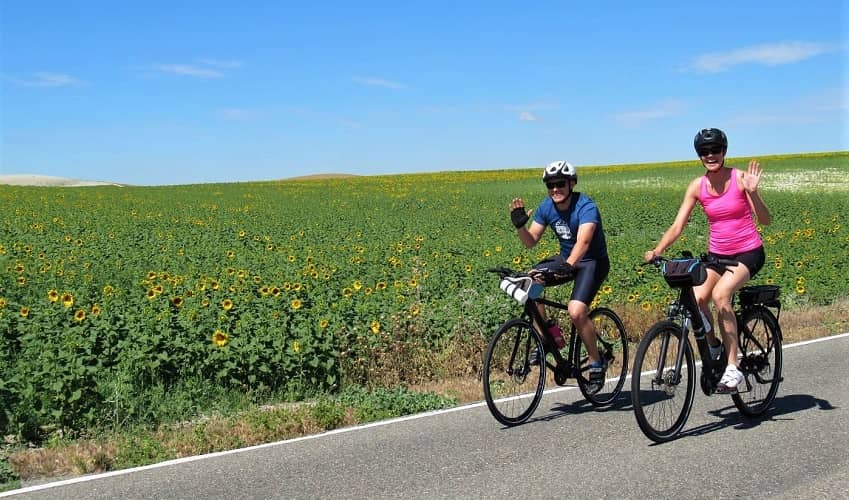
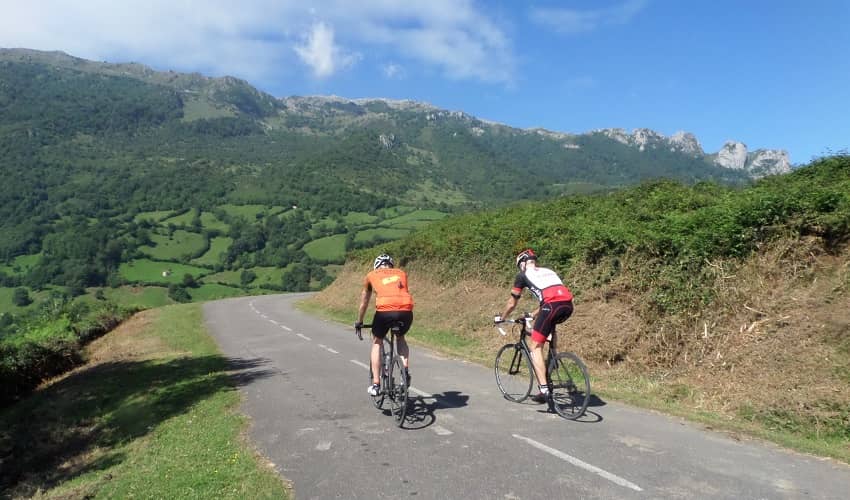
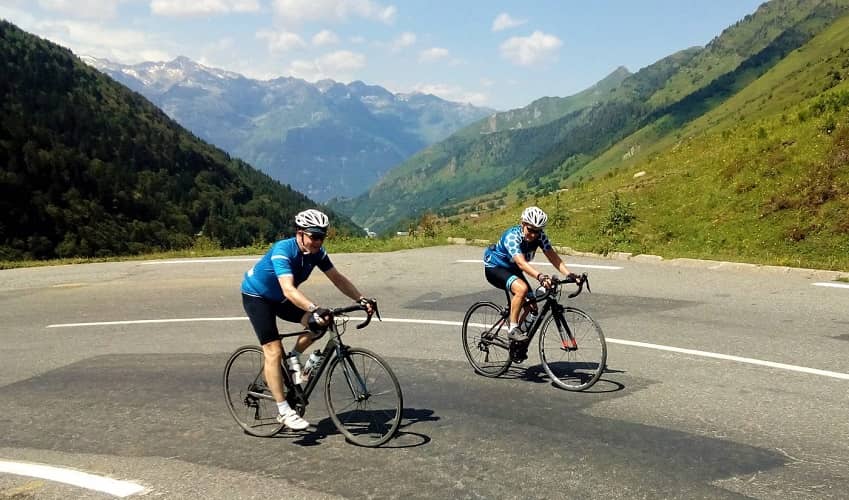
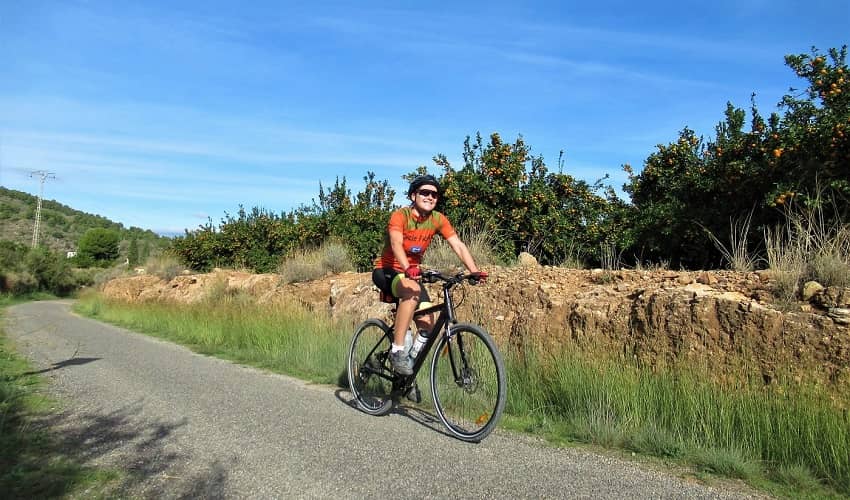
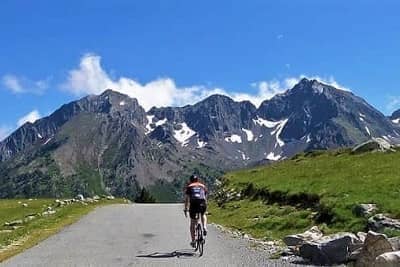
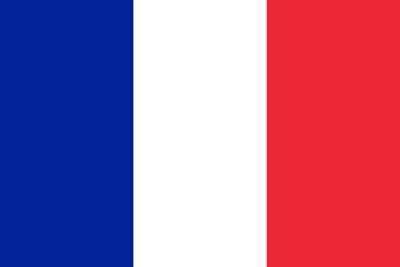 France
France
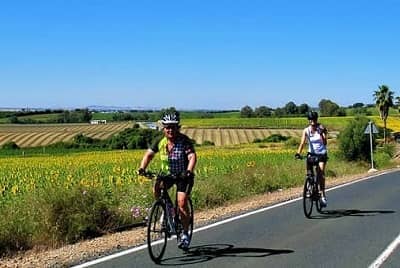
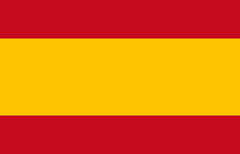 Spain
Spain
